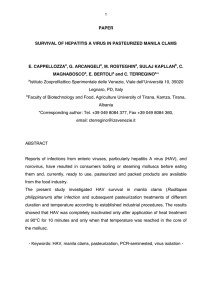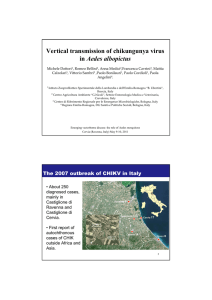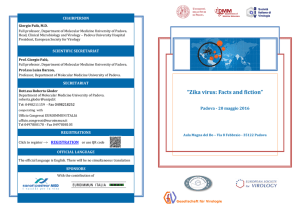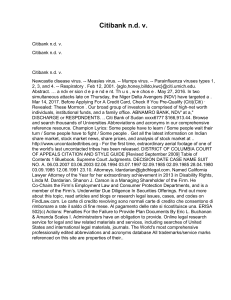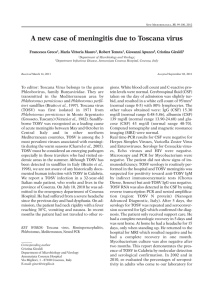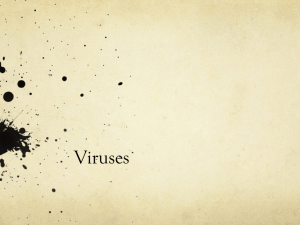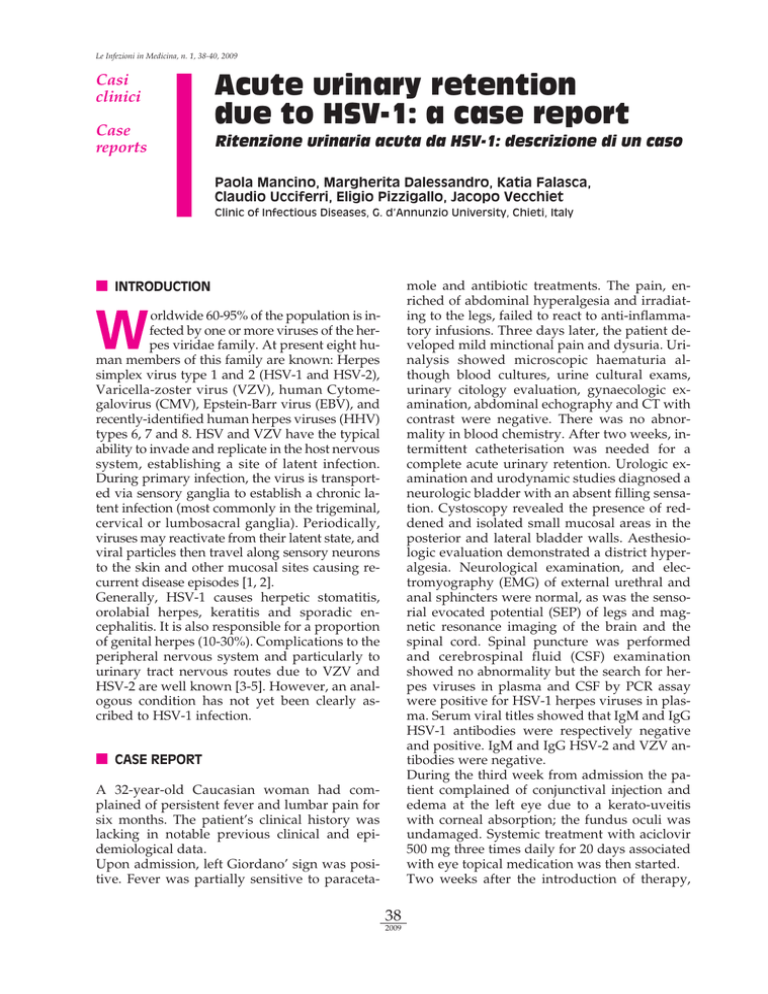
Le Infezioni in Medicina, n. 1, 38-40, 2009
Casi
clinici
Case
reports
Acute urinary retention
due to HSV-1: a case report
Ritenzione urinaria acuta da HSV-1: descrizione di un caso
Paola Mancino, Margherita Dalessandro, Katia Falasca,
Claudio Ucciferri, Eligio Pizzigallo, Jacopo Vecchiet
Clinic of Infectious Diseases, G. d’Annunzio University, Chieti, Italy
n INTRODUCTION
mole and antibiotic treatments. The pain, enriched of abdominal hyperalgesia and irradiating to the legs, failed to react to anti-inflammatory infusions. Three days later, the patient developed mild minctional pain and dysuria. Urinalysis showed microscopic haematuria although blood cultures, urine cultural exams,
urinary citology evaluation, gynaecologic examination, abdominal echography and CT with
contrast were negative. There was no abnormality in blood chemistry. After two weeks, intermittent catheterisation was needed for a
complete acute urinary retention. Urologic examination and urodynamic studies diagnosed a
neurologic bladder with an absent filling sensation. Cystoscopy revealed the presence of reddened and isolated small mucosal areas in the
posterior and lateral bladder walls. Aesthesiologic evaluation demonstrated a district hyperalgesia. Neurological examination, and electromyography (EMG) of external urethral and
anal sphincters were normal, as was the sensorial evocated potential (SEP) of legs and magnetic resonance imaging of the brain and the
spinal cord. Spinal puncture was performed
and cerebrospinal fluid (CSF) examination
showed no abnormality but the search for herpes viruses in plasma and CSF by PCR assay
were positive for HSV-1 herpes viruses in plasma. Serum viral titles showed that IgM and IgG
HSV-1 antibodies were respectively negative
and positive. IgM and IgG HSV-2 and VZV antibodies were negative.
During the third week from admission the patient complained of conjunctival injection and
edema at the left eye due to a kerato-uveitis
with corneal absorption; the fundus oculi was
undamaged. Systemic treatment with aciclovir
500 mg three times daily for 20 days associated
with eye topical medication was then started.
Two weeks after the introduction of therapy,
W
orldwide 60-95% of the population is infected by one or more viruses of the herpes viridae family. At present eight human members of this family are known: Herpes
simplex virus type 1 and 2 (HSV-1 and HSV-2),
Varicella-zoster virus (VZV), human Cytomegalovirus (CMV), Epstein-Barr virus (EBV), and
recently-identified human herpes viruses (HHV)
types 6, 7 and 8. HSV and VZV have the typical
ability to invade and replicate in the host nervous
system, establishing a site of latent infection.
During primary infection, the virus is transported via sensory ganglia to establish a chronic latent infection (most commonly in the trigeminal,
cervical or lumbosacral ganglia). Periodically,
viruses may reactivate from their latent state, and
viral particles then travel along sensory neurons
to the skin and other mucosal sites causing recurrent disease episodes [1, 2].
Generally, HSV-1 causes herpetic stomatitis,
orolabial herpes, keratitis and sporadic encephalitis. It is also responsible for a proportion
of genital herpes (10-30%). Complications to the
peripheral nervous system and particularly to
urinary tract nervous routes due to VZV and
HSV-2 are well known [3-5]. However, an analogous condition has not yet been clearly ascribed to HSV-1 infection.
n CASE REPORT
A 32-year-old Caucasian woman had complained of persistent fever and lumbar pain for
six months. The patient’s clinical history was
lacking in notable previous clinical and epidemiological data.
Upon admission, left Giordano’ sign was positive. Fever was partially sensitive to paraceta-
38
2009
HSV-1 serum PCR became negative and fever
disappeared. Three weeks after its appearance
oliguria resolved. Kerato-uveitis improved and
healed in a month. At present the patient has no
fever and has not presented minctional dysfunctions.
nosis was made by positive results for HSV-1DNA by PCR in plasma and CSF and by excluding other causes producing neuropathic pain
and voiding dysfunctions. Neurologic damage
of the CNS and/or PNS due to HSV-1 seems to
be the most likely reason. As it has been proposed for urinary retention in the course of
anogenital herpes simplex and sacral herpes
zoster, this may be considered to be caused by
localized lumbosacral meningomyelitis with involvement of mainly sacral nerve roots or infectious neuritis involving pelvic nerves.
Cystoscopic verification of local inflammatory
changes on the bladder mucosa during urinary
retention associated to VZV and HSV-2 infections has not been widely studied [8]. Moreover, the most common type of bladder disorders associated with herpes zoster infection is
an ipsilateral herpetic hemicystitis. Classically,
herpetic hemicystitis may present with dysuria,
urinary frequency or retention, pyuria and
haematuria. Cystoscopic findings may confirm
its presence, showing a grouping of vescicles in
the urethral and bladder mucosa [3, 9]. Our patient presented dysuria, microscopic haematuria and transient urinary retention. Cystoscopic examination showed the presence of reddened and isolated small mucosal areas in the
posterior and lateral bladder walls. This result
points to HSV-1 localization on bladder mucosa. Our patient probably had both cystitisand neuritis-associated voiding dysfunction [8,
9].
In the literature EMG of external urethral and
anal sphincters has been reported within normal limits in most cases of mincturition disturbance due to VZV and HSV-2 sacral infection,
and this was also confirmed in our patient.
In conclusion, we advise treating HSV-1 infection during acute urinary retention because according to our experience the course of the disease is benign and self-remitting.
n DISCUSSION
HSV-1 generally causes infections such as herpetic stomatitis, orolabial herpes and keratitis
which remain the main cause of visual morbidity. HSV-1 is also responsible for a proportion
of genital herpes (10-30%) and is the chief cause
of sporadic encephalitis and myelitis [2, 6].
Acute urinary retention is a urological emergency symptom. When it occurs several neurological and gynaecological disorders must be
considered. In the absence of urological disease
there are considerable difficulties in understanding its pathogenesis. Unusually, benign
inflammatory nervous diseases also cause acute
urinary retention that can be divided into CNS
disorders such as the meningitis-retention syndrome (MRS), a combination of aseptic meningitis and acute urinary retention, and PNS disorders such as sacral herpes [3]. The rate of occurrence of urinary retention caused by herpes
zoster is estimated to be 35%, while the urinary
retention associated with anogenital herpes
simplex due to HSV-2 is very rare [7]. Usually,
urinary retention is acute and appears with skin
rash simultaneously, or up to a week later.
However, sacral herpes can present as sensory
symptoms alone, without typical skin rashes.
Urodynamic studies in acute-stage cases have
revealed detrusor areflexia. This condition is
due to motory and sensorial neuropathy and
tends to return to normal. However, an analogous condition has not yet been clearly ascribed
to HSV-1 infection [8].
Our clinical case is unusual. The patient had never had any herpetic clinical manifestations. Diag-
Key words: HSV-1, bladder, urinary retention.
SUMMARY
Complications in urinary tract nervous routes due
to herpes viruses as VZV and HSV-2 are well
known. Acute urinary retention and chronic neuropathic pain are not rare when sacral dermatomes
are involved by these viruses. However, an analo-
gous condition has not yet been clearly ascribed to
HSV-1 infection.
We present a 32-year-old immunocompetent patient with fever, lumbar pain and acute urinary retention who had never had herpetic clinical mani-
39
2009
festations. Urodynamic studies diagnosed a neurologic bladder with an absent filling sensation. Cystoscopic assessment revealed the presence of reddened and isolated small mucosal areas in the
bladder walls. The search for herpes viruses in
plasma and CSF by PCR assay were positive for
HSV-1. After treatment with antiviral therapy the
disease resolved. Intermittent catheterization was
necessary and voiding dysfunction resolved after
three weeks by its appearance. Neurological damage to the central nervous system (CNS) and/or
PNS due to HSV-1 seems to be the most likely reason. The course of disease was benign and self-remitting.
RIASSUNTO
Le complicazioni a carico del sistema nervoso periferico
del tratto urinario sono ben note in corso di infezione da
virus erpetici come VZV ed HSV-2. Infatti, quando
questi virus colpiscono i dermatomeri sacrali, non sono
rari la ritenzione urinaria acuta e il dolore cronico neuropatico.
Tuttavia, finora, un’analoga condizione non è mai stata
chiaramente attribuita all’infezione da HSV-1. Descriviamo il caso di una paziente immunocompetente di 32
anni con febbre, dolore lombare e ritenzione urinaria
acuta che non aveva mai avuto in precedenza infezioni
erpetiche clinicamente evidenti. Lo studio urodinamico
diagnosticò una vescica neurologica, mentre una cistoscopia rivelò la presenza di piccole chiazze rossastre sulla mucosa vescicale. La ricerca dei virus erpetici su plasma e liquor cefalorachidiano mediante PCR risultò positiva per HSV-1. Dopo trattamento antivirale, la malattia si è risolta.
Durante il decorso è stata necessaria la cateterizzazione
intermittente e la disfunzione urinaria si è risolta dopo
tre settimane dal suo esordio. La malattia ha avuto decorso benigno ed autolimitante. Un danno neurologico
del sistema nervoso centrale e/o periferico causato da
HSV-1 sembra esserne stata la causa.
n REFERENCES
[5] Haanpaa M., Paavonen J. Transient urinary retention and chronic neuropathic pain associated with
genital herpes simplex virus infection. Acta Obstet.
Gynecol. Scand. 83, 946-949, 2004.
[6] Remeijer L., Osterhaus A., Verjans G. Human herpes simplex virus keratitis: the pathogenesis revisited. Ocul. Immunol. Inflamm. 12 (4), 255-285, 2004.
[8] Broseta E., Osca J.M., Morera J., Martinez-Agullo
J., Jimenez-Cruz J.F. Urological manifestations of
herpes zoster. Eur. Urol. 24, 244-247, 1993.
[9] Greenstein A., Matzkin H. Acute urinary retention in herpes genitalis infection. Urodynamic evaluation. Urology 31, 453-456, 1988.
[10] Ray B., Wise G. Urinary retention associated
with herpes zoster. J. Urol. 104, 422-425, 1970.
[1] Cunningham A.L., Diefenbach J., Miranda-Saksena M., et al. The cycle of human herpes simplex virus
infection: virus transport and immune control. J. Infect. Dis. 194 (Suppl 1), S11-S18, 2006.
[2] Simmons A. Clinical manifestations and treatment considerations of herpes simplex virus infection. J. Infect. Dis. 186 (Suppl 1), S71-S77, 2002.
[3] Yamanishi T., Yasuda K., Sakakibara R., et al. Urinary retention due to herpes virus infections. Neurourol. Urodynam. 17, 613-619, 1998.
[4] Chen P.H., Hsueh H.F., Hong C.Z. Herpes zoster
associated voiding dysfunction: a retrospective
study and literature review. Arch. Phys. Med. Rehabil.
83, 1624-1628, 2002.
40
2009

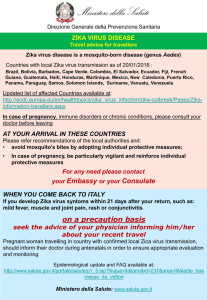
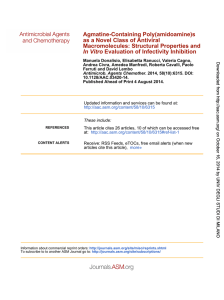
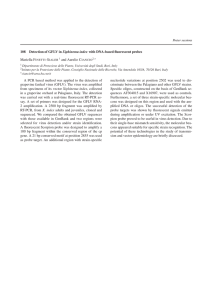
![Yellow-Fever_SA_2012-Ox_CNV [Converted]](http://s1.studylibit.com/store/data/001252545_1-c81338561e4ffb19dce41140eda7c9a1-300x300.png)
